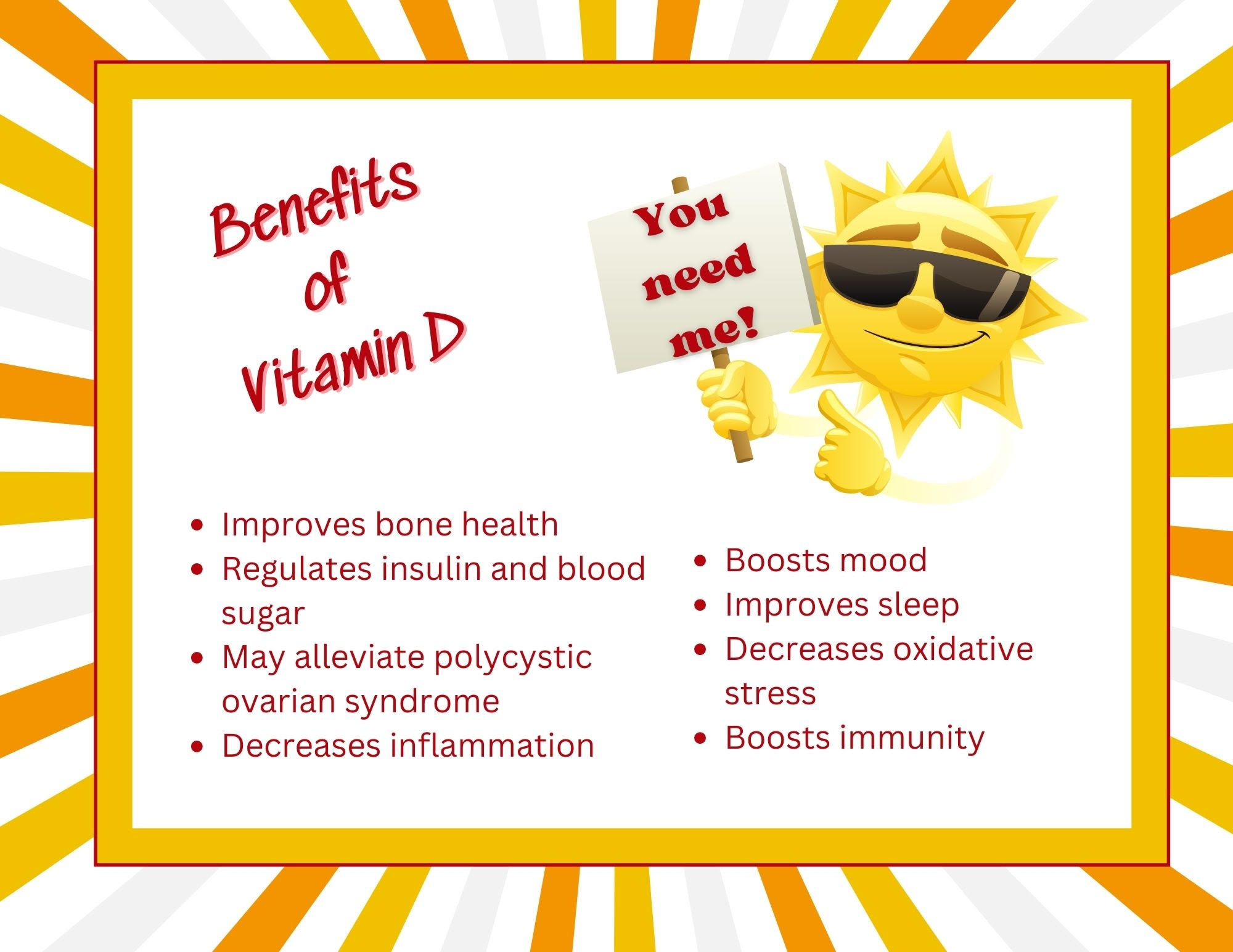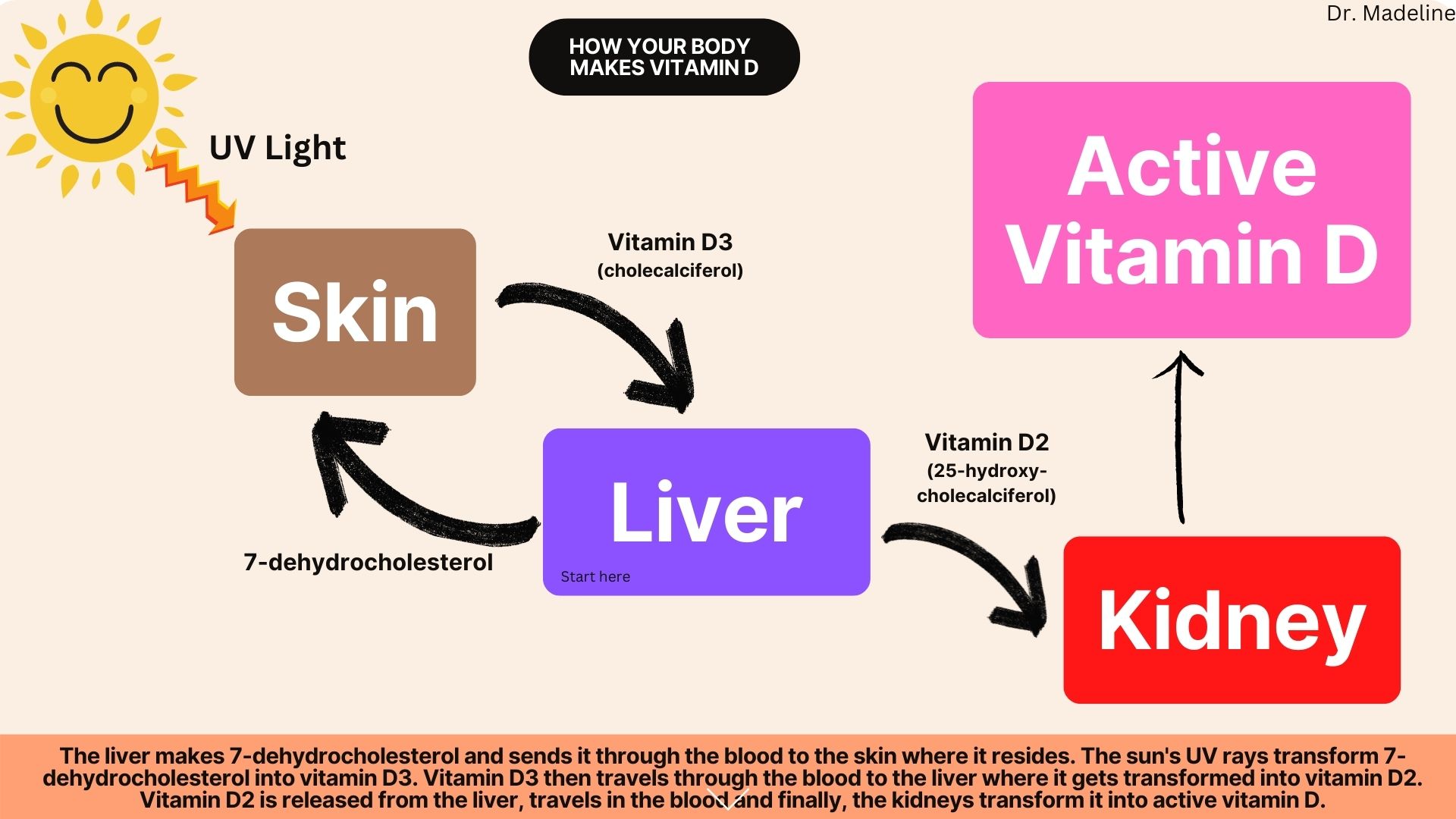Coop Scoop Blog
Health For Non-Majors: Sun, Cholesterol, and Vitamin D
By Dr. Madeline
Before the invention of clothes, humans exposed their full bodies to the warm sun for hours each day, hunting and gathering for food. Humans have adapted to and use the sun’s mighty rays to promote their health. How? Your skin stores a special cholesterol based molecule that hangs out and waits for the sunshine’s ultraviolet light (UV) to reach it. The UV light from the sun activates the molecule and starts the process of making the amazing vitamin D!
This is why being out in the sunshine is the optimal way for a human to make vitamin D. The inactive molecule stored in the skin has a very long name. Ready for it? 7-dehydrocholesterol. Let’s break it down and say it out loud: 7 - De- Hydro- Cholesterol. This lovely molecule is made by the liver and, as you learned, waits to get activated in the skin to get some warm rays of sunshine.
Making vitamin D is one reason that we can not deny the need for daily sunshine! Vitamin D has many important physiological functions and can act like a hormone in the body. Below see the list of benefits of vitamin D.

Our liver is an amazing organ with over 500 functions. One of these functions is to make cholesterol. Cholesterol is essential to every cell of our body and contains the basic structure for many of our hormones. One cholesterol based molecule we mentioned above, 7-dehydrocholesterol, is made by the liver and sent to hang out in the skin waiting to be activated by the sun. But that is just the beginning of the story.
Below I outline the many steps needed to get fully active vitamin D in your body. Let’s start from the beginning, which always includes a healthy diet. You can use the figure as a guide for the words that follow.
First, the liver makes 7-dehydrocholesterol and sends it to the skin. UV light converts 7-dehydrocholesterol to cholecalciferol (also known as Vitamin D3). Once transformed, the molecule moves from the skin into the bloodstream where it then flows back to the liver. In the liver, the molecule gets updated again to 25-hydroxycholecalciferol (Vitamin D2). This molecule then gets released back into the bloodstream and flows around until it reaches your lovely kidneys where it finally gets converted to the active form of vitamin D (1,25 dihydroxycholecalciferol or calcitriol)!

So how much vitamin D do we need? And how can we tell if we have enough? One can get their vitamin D3 blood levels checked by a medical doctor with a 25-hydroxycholecalciferol test (sometimes written, 25-OH-D). If diagnosed with low vitamin D levels (less than 60 ng/mol), the prescription is generally for vitamin D2, fast tracking the transformative process of getting active vitamin D in the body.
When people purchase supplements for vitamin D, the vitamin D is usually in the vitamin D3 form because it allows us to bypass the sunshine step and lets our body do the rest of the molecular conversions. Taking supplemental vitamin D3 can be important, especially for those of us who live in climates where we have shorter colder days in the winter and don’t have the ability to naturally make this hormone. However, because of the risk of overdosing on fat soluble vitamin D, one should always consult their trusted health care provider to find out blood levels of vitamin D3 first. This will optimize any supplement, if needed.
The best way for a human to get their vitamin D is through natural sunlight. We are all well aware that the sun’s UV light can damage DNA, potentially leading to cancer. But please remember that If you wear sunscreen, it blocks UV light so your body therefore can not make the first conversion toward making vitamin D. So, while we have to be careful not to be burned by the sun, it is essential to get some unfiltered sun in order to naturally make the vital hormone, vitamin D.
Humans use many organs in the step by step process to make Vitamin D and sunshine is an essential component! The full process requires four major organs (liver, skin, kidney) as well as the transportation system of the body, the cardiovascular system (heart and blood vessels).
It is my hope that you have gained a bit of understanding into the interconnected relationship we have between the sun and a healthy body. Understanding the complex and beautiful movement of molecules through us gives us deeper insight into the need to not only nourish our body with good food, but to also preserve and protect our natural world from the earth to the sun…and maybe even beyond.
References
